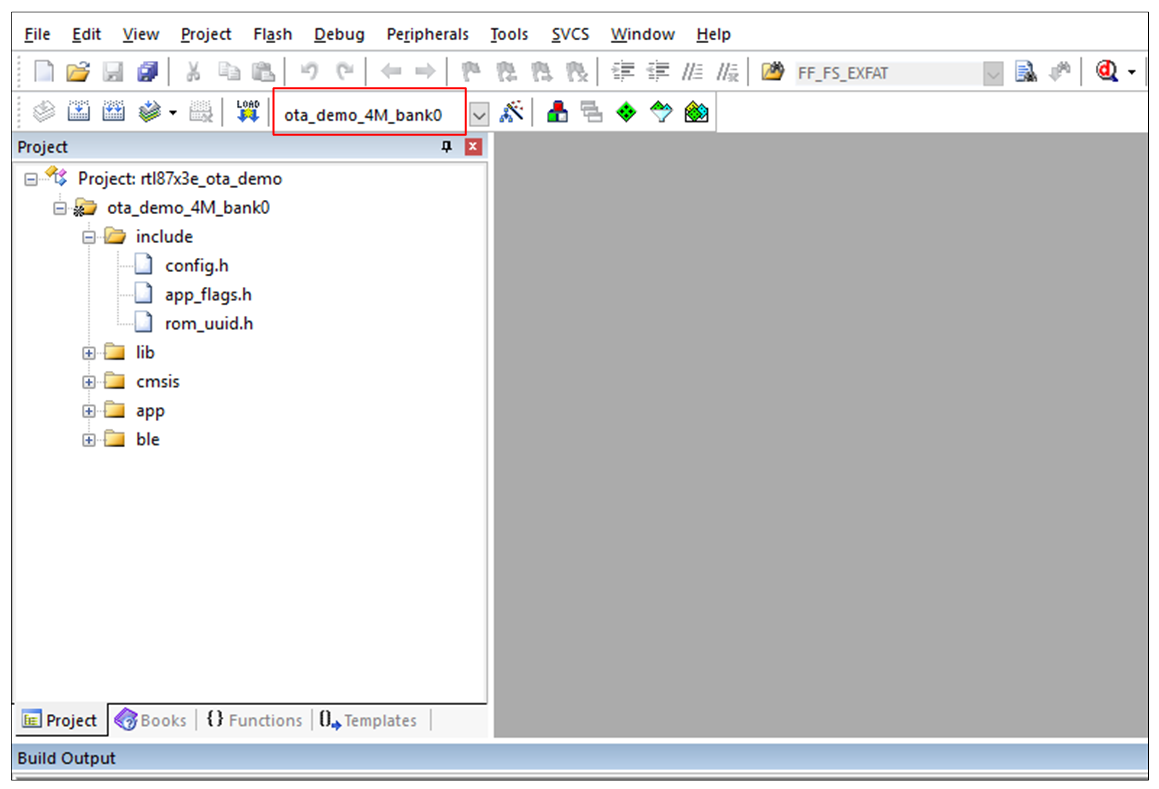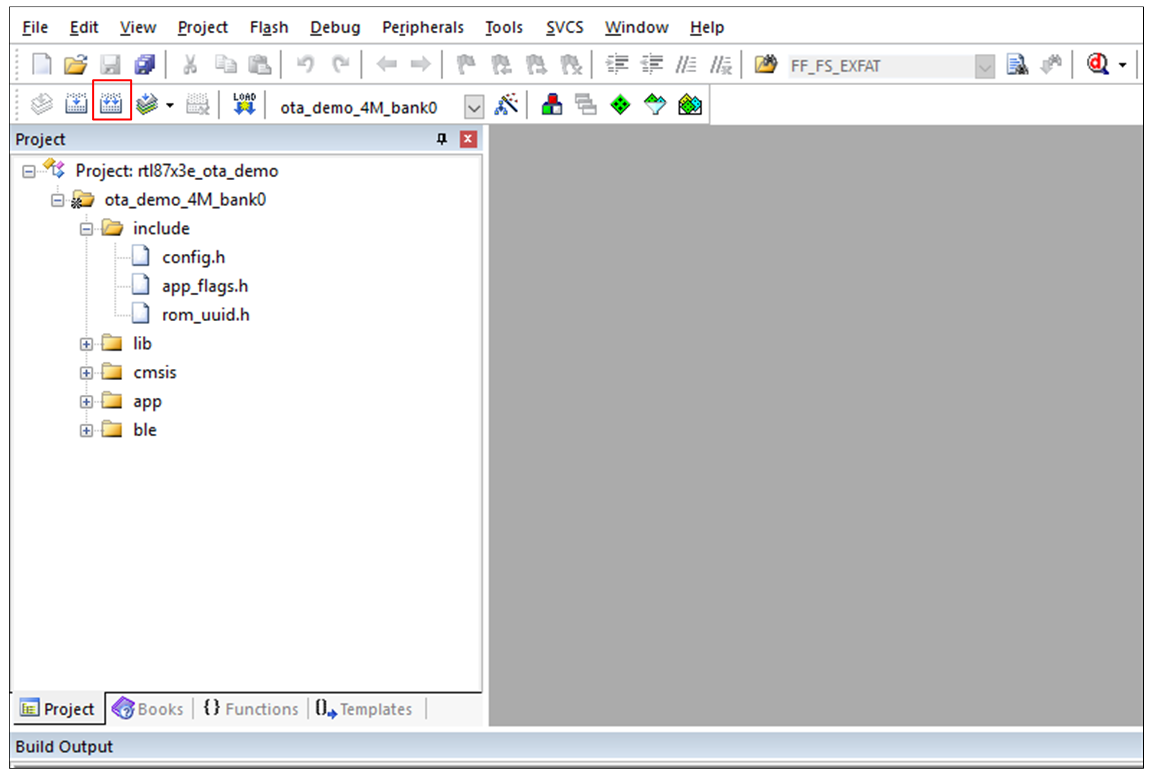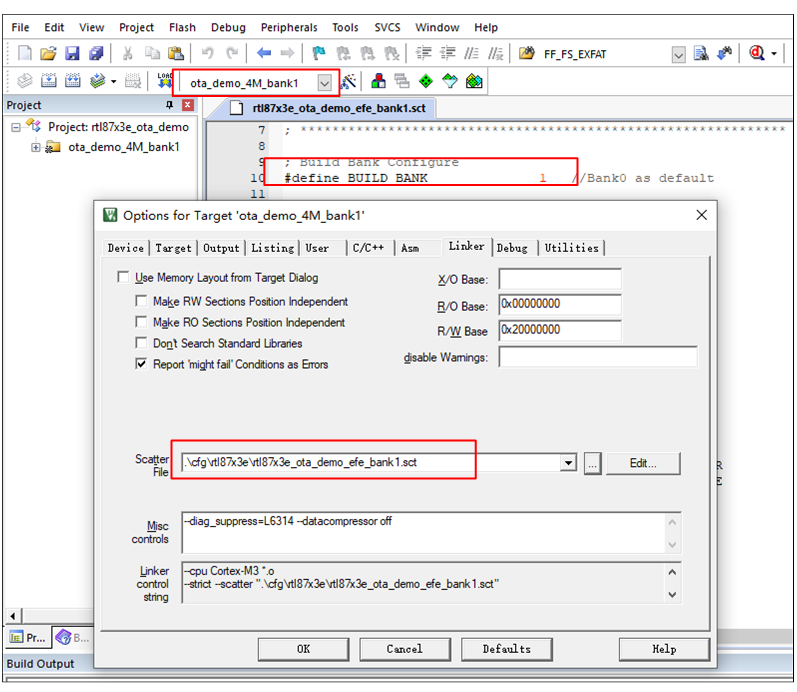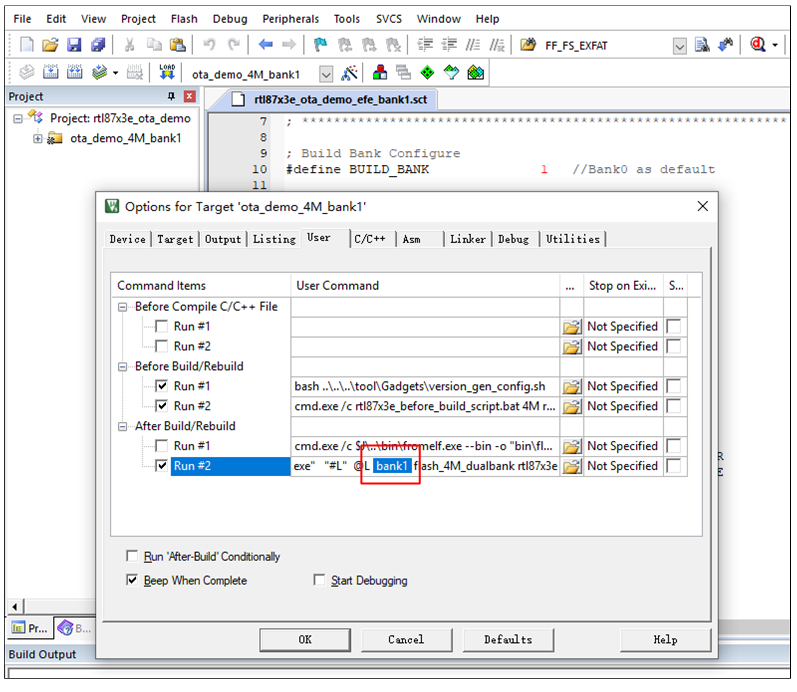OTA
OTA refers to the wireless delivery of software updates to devices. SDK supports OTA via Bluetooth. SDK supports two Bluetooth transports for Android and iOS: OTA via GATT, which is suitable for both iOS and Android, and OTA via SPP, which is only suitable for Android. The OTA has more details on OTA principle and design. The OTA project gives a simple example of how to use OTA. This project implements dual bank OTA.
Requirements
The sample supports the following development kits.
Hardware Platforms |
Board Name |
Build Target |
|---|---|---|
RTL87x3E EVB |
|
|
RTL87x3EP HDK |
RTL87x3EP EVB |
|
RTL87x3D HDK |
RTL87x3D EVB |
|
Note
To purchase EVB, please visit https://www.realmcu.com/en/Home/Shop.
When built for an xxx_4M_xxx build target, the sample is configured to compile and run with a 4M flash map.
When built for an xxx_8M_xxx build target, the sample is configured to compile and run with an 8M flash map.
When built for an xxx_16M_xxx build target, the sample is configured to compile and run with a 16M flash map.
The sample also requires a phone installed RTKOTA APP.
To quickly set up the development environment, please refer to the detailed instructions provided in Quick Start.
Configurations
To disable OTA via GATT or OTA via SPP, modify the macros OTA_DEMO_VIA_GATT_ENABLE and OTA_DEMO_VIA_SPP_ENABLE in src\sample\ota_demo\app_flag.h.
Building and Downloading
The detailed information about building and downloading can be found in Building and Downloading.
This sample can be found under sdk\board\evb\ota_demo in SDK folder structure.
Take the project rtl87x3e_ota_demo.uvprojx and target ota_demo_4M_bank0 as an example, to build and run the sample with Keil development environment, follow the steps listed below.
Open
rtl87x3e_ota_demo.uvprojx.-
Choose the build target ota_demo_4M_bank0.

Chose Build Target
-
Building the target.

Building
After a successful compilation, the APP bin file
ota_demo_bank0_MP-v0.0.0.0-xxx.binwill be generated in the directorybin\rtl87x3e\flash_4M_dualbank\bank0. Download APP demo image into EVB board.
Experimental Verification
The detailed test procedure can be found in Experimental Verification. Note that the OTA project enables LE advertising all the time for OTA via GATT and users don't need to enable LE advertising by MCUConfig Tool.
Code Overview
The OTA demo overview will be introduced according to the following parts.
The OTA sample project overview will be introduced in the chapter Source Code Directory.
The OTA sample project source code overview will be introduced in the chapter Source Code Overview.
Source Code Directory
This section describes the project directory and project structure. The reference files directory is as follows.
Project directory:
sdk\board\evb\ota_demo.Project source code directory:
sdk\src\sample\ota_demo.ota_service.c:sdk\src\ble\profile\server.ota_service.h:sdk\inc\bluetooth\profile\server.
Source files in the sample project are currently categorized into several groups as below.
└── Project: xxx
├── include
├── Device includes startup code
│ ├── startup_rtl.c
│ └── system_rtl.c
├── Lib includes all binary symbol files that the OTA is built on
├── Profile includes LE profiles or services used by the OTA
│ ├── ota_service.c
│ └── transmit_service.c
└── APP includes the OTA user application implementation
├── app_main.c
├── app_ota.c
├── app_sdp.c
├── app_cmd.c
└── app_transfer.c
Source Code Overview
The following sections describe important parts of this application.
Initialization
main() is invoked when the application is powered on or the chip is reset, and it performs the following initialization functions.
int main(void)
{
void *app_task_handle;
APP_PRINT_INFO0("OTA_DEMO START FROM HW_RESET");
os_msg_queue_create(&ota_demo_io_queue_handle, "ioQ", MAX_NUMBER_OF_IO_MESSAGE, sizeof(T_IO_MSG));
os_msg_queue_create(&ota_demo_evt_queue_handle, "evtQ", MAX_NUMBER_OF_EVENT_MESSAGE,
sizeof(unsigned char));
app_init_timer(ota_demo_evt_queue_handle, MAX_NUMBER_OF_APP_TIMER_MODULE);
board_init();
framework_init();
app_bt_gap_init();
app_ota_init();
app_gap_init();
#ifdef OTA_DEMO_BY_BLE_ENABLE
app_ble_gap_init();
app_ble_service_init();
#endif
app_sdp_init();
app_spp_init();
app_transfer_init();
os_task_create(
&app_task_handle, /* Task handle. */
"ota_demo_main_task", /* Text name for the task, to facilitate debugging only. */
ota_demo_main_task, /* Pointer to the function that implements the task. */
(void *)0, /* We are not using the task parameter. */
APP_TASK_STACK_SIZE, /* Stack depth in bytes, 1KB. */
APP_TASK_PRIORITY /* This task will run at priority 2. */
);
os_sched_start();
return 0;
}
Detailed OTA source code overview can be found in Code Overview.
Troubleshooting
This section introduces some frequently asked questions.
How to Generate Bank1 Images?
OTA needs bank1 images, and here is how to generate bank1 images.
See Also
Please refer to the relevant API Reference:


